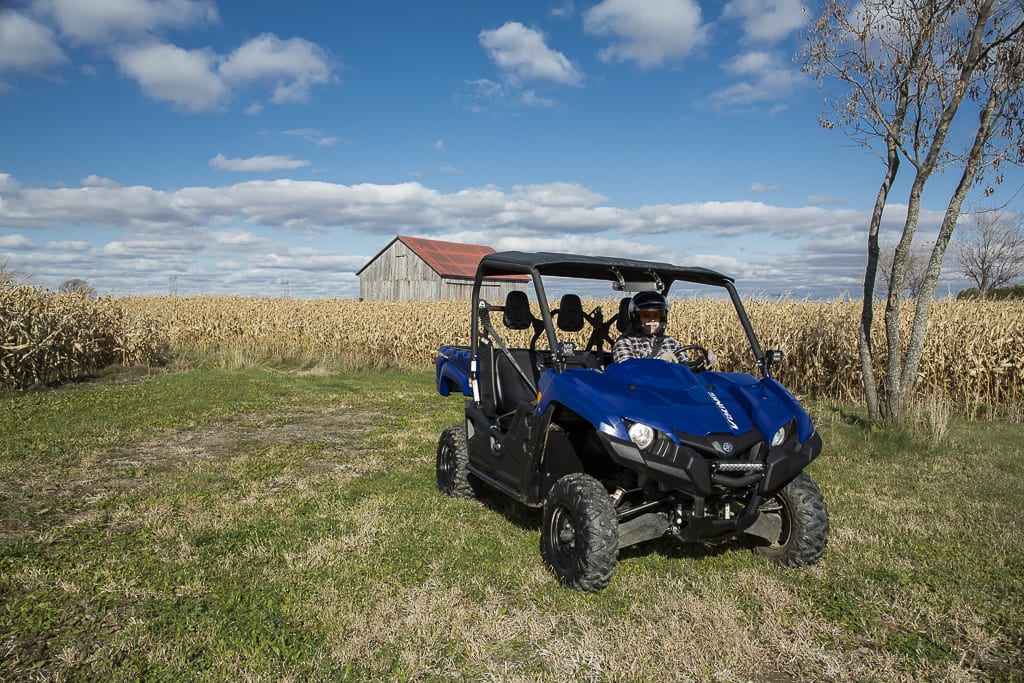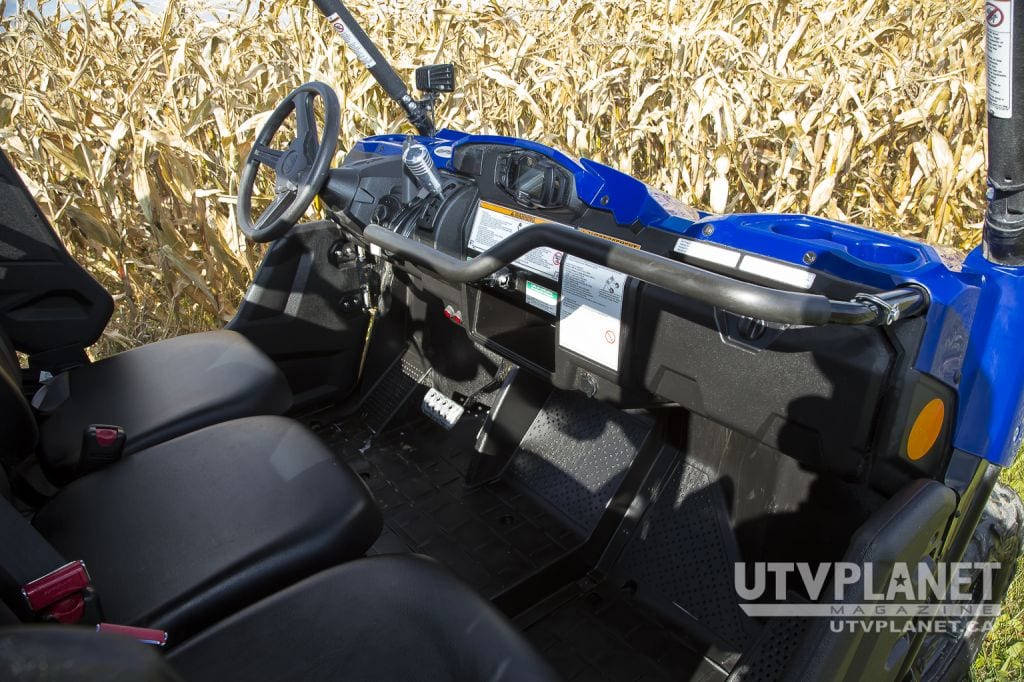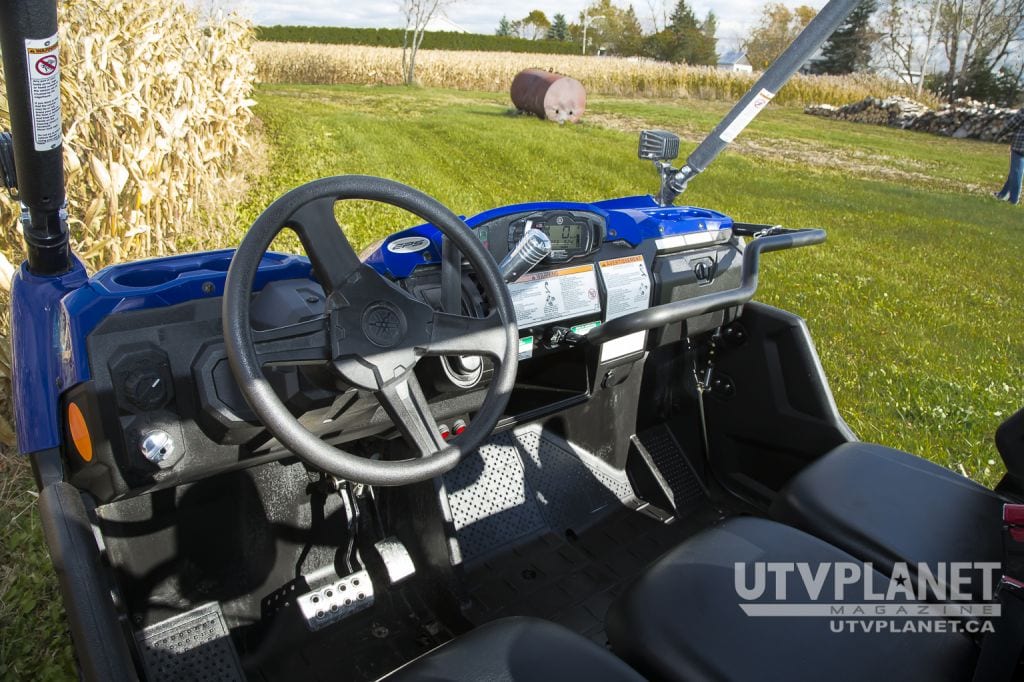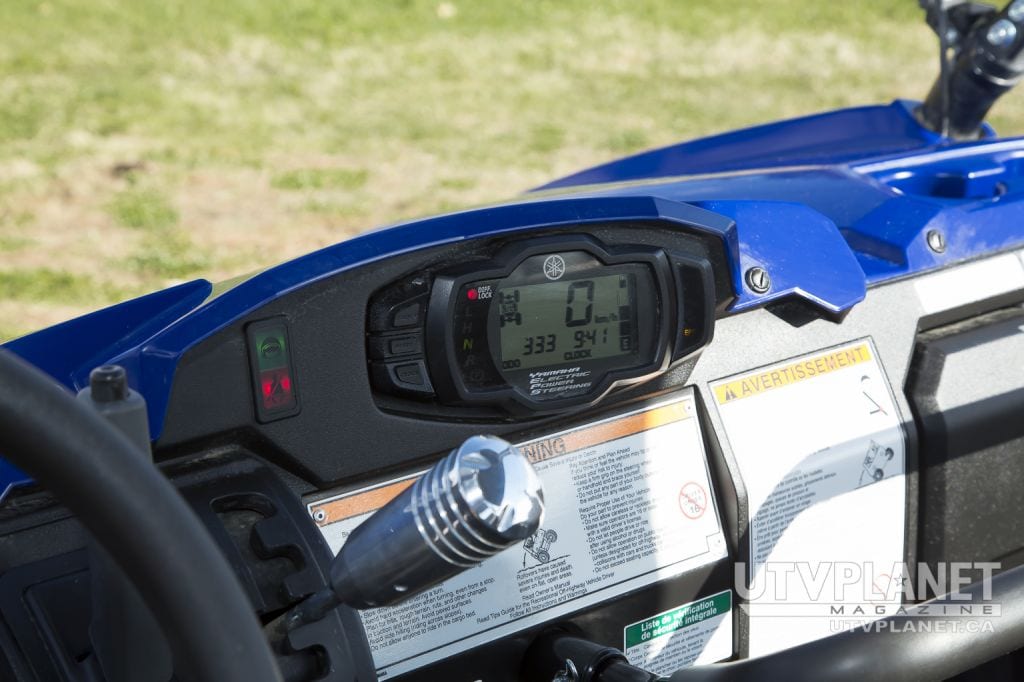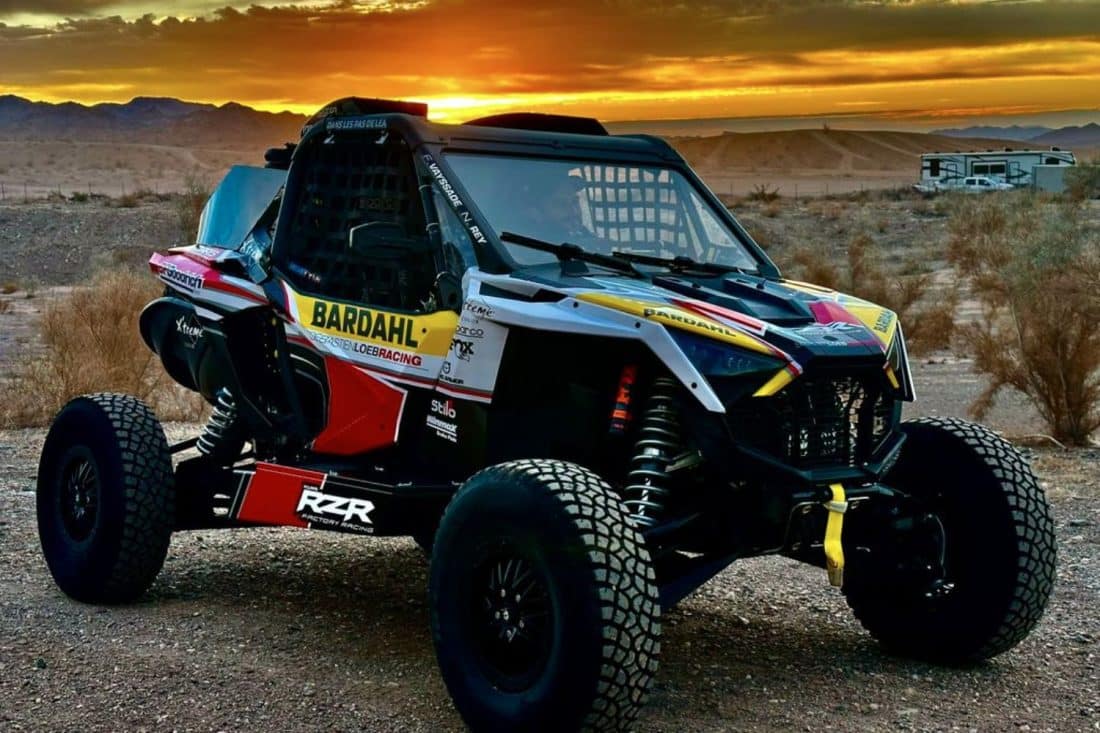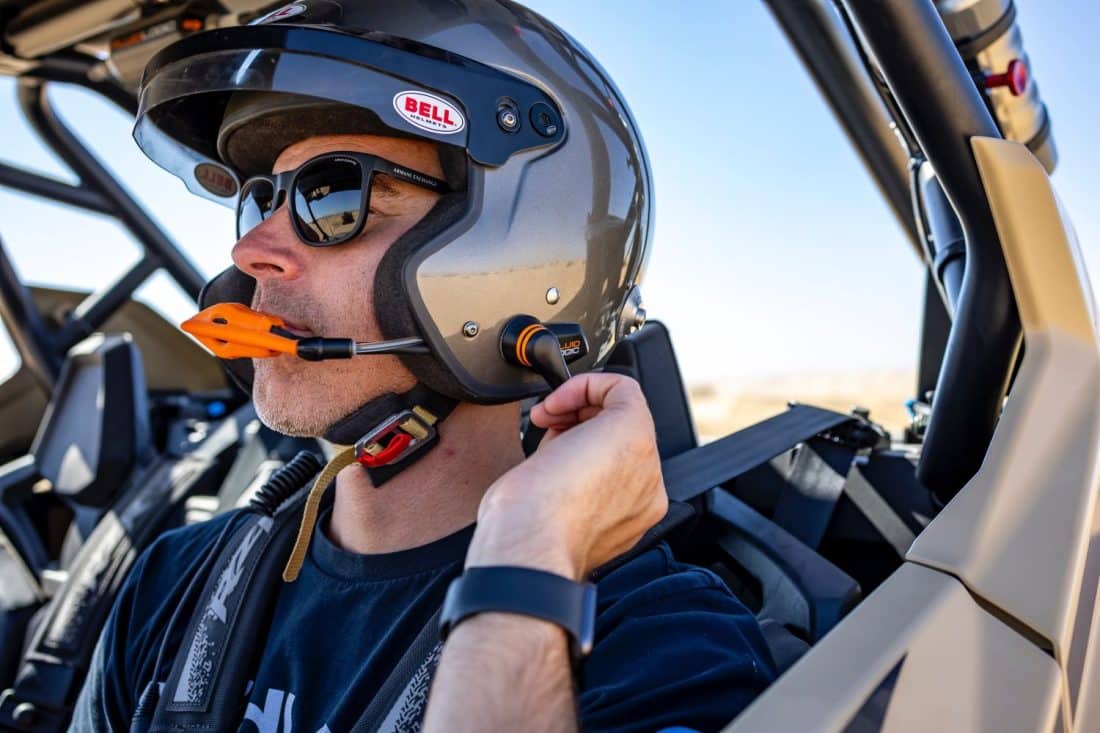UTV’s are comparable to pickup trucks in that they haul people and cargo. Both vehicles were originally designed for work alone – yet as time went by owners found all kinds of recreational uses for them as well and also demanded more of the vehicles. Manufacturers took note of these trends and then build the next generation of vehicles to suit the changing tastes of those customers. Yamaha has always been good at this – doing it first with the Rhino back in 04; at the time a mould breaking design.
However, just like pickup trucks over the past few generations UTVs have continued to grow in size and capability. This brings us to the newest Yamaha – the Viking; a UTV comparable in size and capability to the Polaris Ranger, Honda Pioneer and Can-Am Commander. This new model brings Yamaha’s side by side offering up to bar set by the other builders – one that they’d slipped off of in recent years.
The length on the new machine is 122-inchs (310cm); the width is 61.8-inches (157cm) and the wheelbase a respectable 74.1-inches (188cm). Its built to carry three adults across a bench seat inside a full ROPS certified cage – and behind them it will also haul 600lb (272kg) in the tilting dump-bed while towing 1500 lb (680kg) with the standard automotive 2-inch square tube hitch receiver.
A work horse – surely that’s the best way to describe this new UTV. However it’s new look is also distinctively Yamaha ATV and the design is all about work – but also off-road efficiency and toughness with sturdy plastic body parts and steel everywhere it’s needed to fend off the worst bush. Not to mention that it’s now easily as big as the competitors that entered this market over the past several years.
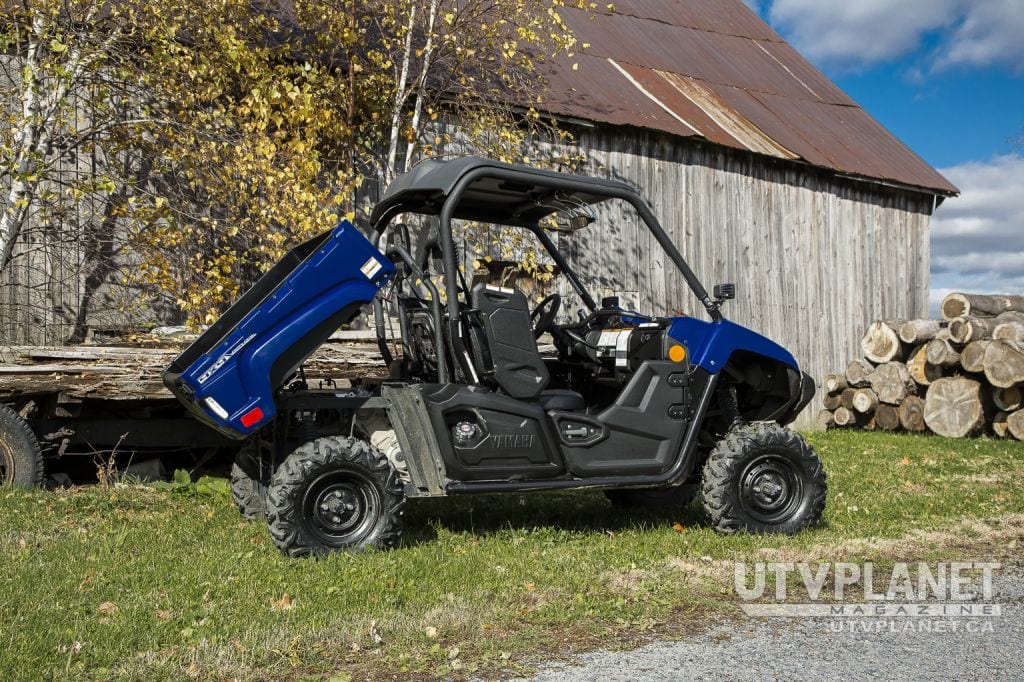
But it wasn’t that long ago that Yamaha had a different vision with what was then another first – the Rhino. I bring this up only to demonstrate two things. One, how quickly the entire all-terrain vehicle segment has changed and; two: how really all the companies involved in this business have been working furiously to fill the needs that their customers (meaning us…) keep coming up with.
Consider how I described the original Rhino introduction in a review published in March of 2004.
ATVs have moved from seasonal use to year-round conveyance so quickly that I’m hard pressed to really say when it happened. A good gauge though is the fact that the manufacturers offer us machines for testing year-round now, and they wouldn’t do that if they had any doubts as to the viability of the winter-use of their products. That, briefly, is the reason I had the new Yamaha Rhino out in the bush – in January.
Apart from being a new ATV to test the Rhino is a new subcategory, the side-by-side. This seating style is most often associated with golf carts or the landscaping type work buggy’s built by John Deere or Kawasaki, but that is where the similarities end.
The heart of the Rhino is the proven 660cc engine that has been doing duty in the Yamaha Grizzly for the past two seasons. This power plant is liquid-cooled, five-valve single cylinder and it’s counter-balanced. It uses Yamaha’s On-Command transmission that delivers 2WD/4WD and a 4WD differential locked position for fixed four-wheel-drive action. The Rhino offers four-wheel independent suspension with 185 mm (7.3”) of wheel travel – front and rear. The ground clearance is 305mm (12.1”) and the suspension, front and rear, is adjustable. This is the key difference in what I’m going to call the next-generation of side-by-sides. Ground clearance and the ability to traverse obstacles in a similar fashion to what a single-rider ATV can make the Rhino a better-rounded ATV then its cousins found on the golf course. Work or play on landscaped terrain or in the bush is equally possible and add to that its cargo and towing capability and you have a triple-threat machine. Albeit, (might as well say it now) one that is limited by its size. That’s the trade off – but I suspect that there is a large enough group of buyers who won’t see this as a negative to keep Yamaha production busy for the foreseeable future.
Within this review is an unrecognized joke – one that is only funny now. Note that I say “one that is limited by its size”. It’s funny because today most of the machines in the UTV world dwarf a Rhino of just 10 years ago. It seems that like the pickup trucks we drive today everything that is bigger is simply better.
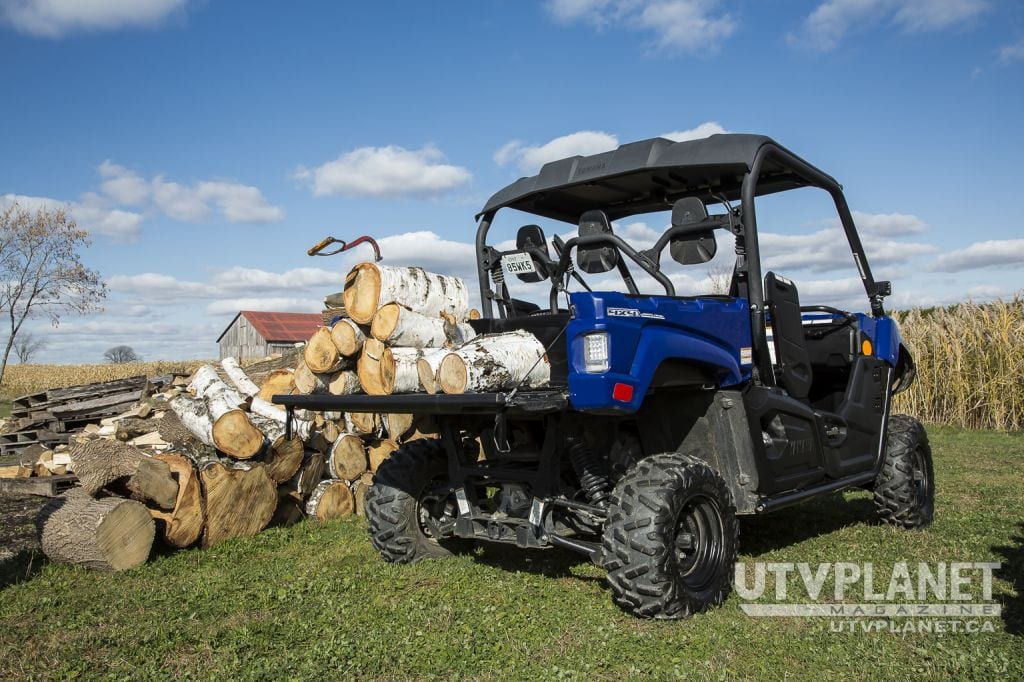
Weighing in at 1,343 lb (609kg) the base Yamaha Viking has the weight to carry all the people and cargo it says it can. In the late autumn we had a chance to get out and do just that – including dragging a trailer around.
The first advantage to this unit’s weight is that it makes sure that the power gets to ground. The new Maxxis Big Horn (with 6-ply rating) tires stick and turn rather than spin and churn. Even with the all this load, in the rain, the Yamaha Viking climbed rotted logs and crawled over rocks with its independent double wishbone suspension (front and rear). This setup has over 8-inches (20cm) of travel at each corner; yet with all that weight on it still had minimal squat and most of the empty clearance of 11.8-inches (300mm) was maintained.
We towed a trailer behind the Yamaha Viking to spread gravel on an off-road course that we did maintenance on. It’s one I use for the annual Canadian Truck King Challenge (but that’s a different story). However, as a work vehicle – we also piled it with chainsaws, gas, oil, tow straps, pry bars, axes and safety gear. We worked along the trail using the Viking as our tool caddy and the towed trailer with gravel filled the nastiest holes – spots we figured the pickup trucks couldn’t navigate.
To get through these various bits of terrain, the Viking offers Yamaha’s “On-Command” system. The driver operates a simple rotary type switch that changes up the traction mode easily and electronically from two-wheel drive to four-wheel drive and a locked differential mode.
Powering the new Yamaha Viking is a 686cc, liquid-cooled 4-stroke, 4-valve, fuel-injected engine that has been re-engineered to offer a broader powerband. From low speeds to the highest rpms this motor produces more torque than any before it. The key changes have to do with a new combustion chamber shape, revised compression ratio, new cam profile and forged piston. However, it’s interesting to note that Yamaha has stayed with an engine not much larger than the original Rhino. I see this as a statement (one that Honda has been making for years) that they will supply enough power in their products – but not to excess just for the sake of bragging rights.
The placement of this engine in the new chassis is just to the rear of centre – this is another reason the traction is very good. It spreads the weight of the engine to the front and rear – however with a bias to the rear axle where most of the push needs to come from. That’s the good news. What’s less good is the amount of noise that rises to the ears of the occupants. Yamaha should look at some more sound deadening technology for this motor’s position.
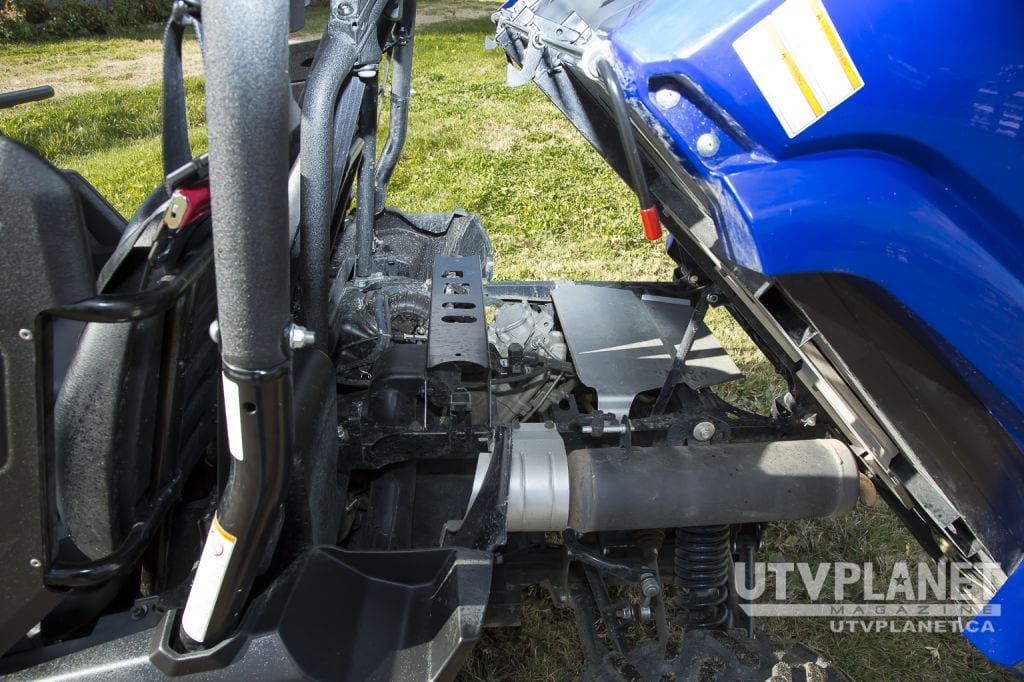
A nice feature of the Viking (that we noted) is the fuel capacity. Almost 10 US gal (36.7L) – with this amount of fuel on board you can easily be out all day without fear of running out. Another work day feature that stands out is the new flat floor design. This makes for quick, easy entry/exit on either side as work requires during lots of stops.
While brakes always seem to be an afterthought when testing, I realized after the fact how well they worked – mostly when I started adding up the weight that was on the Viking – plus the trailer. As a whole number we easily were in the 3000 lb plus range (1360kg). Viking uses disc brakes on the front and rear. The discs themselves have a large diameter and each uses dual piston calipers that grab and hold easily. Viking also comes with a mechanical parking disc brake that even holds solid on hills. Mind you, that new engine also offers engine braking which is very effective at holding the unit back as it descends steep slopes.
Inside the cab of the Yamaha Viking the seat back has a good recline angle – however the centre seat is tilted 5 degrees farther back. This creates an off-set seating position that allows all three passengers to fit more comfortably (without rubbing shoulders). Yamaha also uses formed urethane cushioning to fit the rider’s waist for comfort and safety. The result is the feeling that you sit “in” the Viking – not “on” it.
Also inside this new cab are all the safety features that frankly are a must with today’s UTVs. Seatbelts, handholds and even a partition on the floor that keeps passenger’s feet from intruding into the space the drivers feet need to operate accelerator and brake. Sturdy plastic doors with slam-latch lockers also work to keep bodies inside the cage where it’s safe.
The Yamaha Viking, as with all the UTVs in the segment, has found other things to do for their owners besides work. Hunting, Fishing, Snowplowing and trail riding. So, to that end Yamaha offers a host of bolt-on accessories. One of the ones I had a chance to play with was a hard case gun scabbard that was bolted on to the rear of the roll cage just above the dump-bed. In the case of this add-on, at least, Yamaha needs to do some more work. The case itself is good quality and it is easily mounted – however when in place it obstructs the drivers view when backing up and once in place the dump-bed can no longer dump. Come on guys, you can do better.
Past this small irritation it’s obvious the build quality of all Yamaha products is found in the new Viking as well. And, for those fans of the brand who have been clamouring for a vehicle just like the competition has trotted out – well, they should be pretty happy.
For more information on the Yamaha Viking, please visit www.YamahaViking.com


